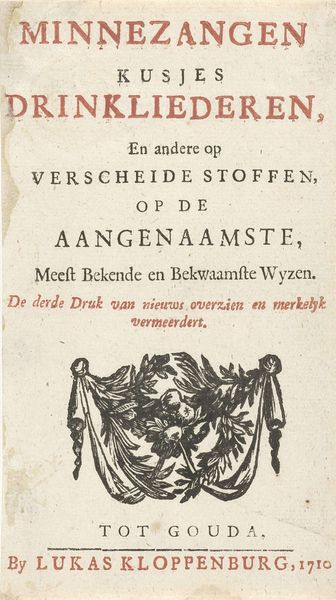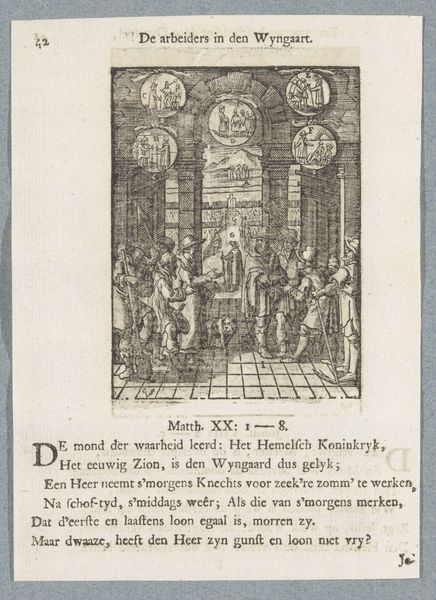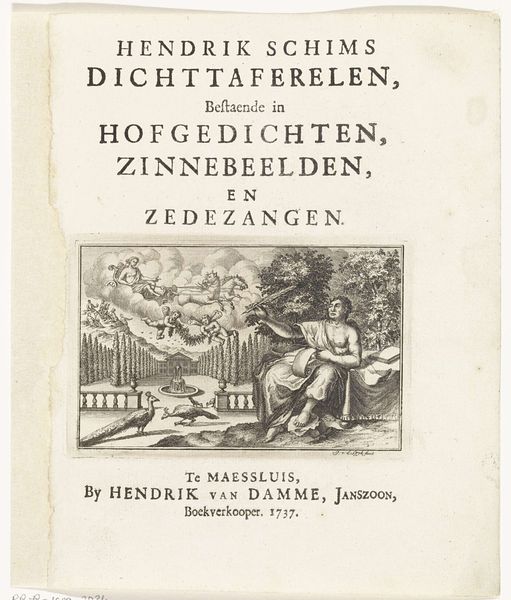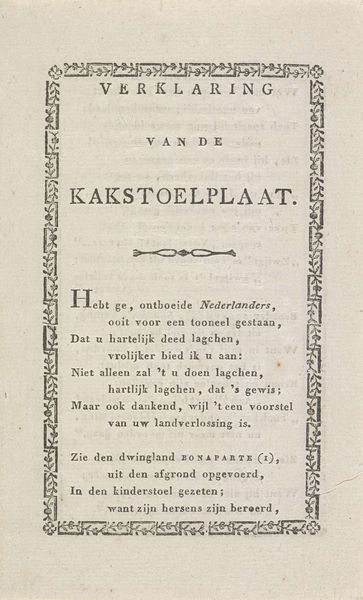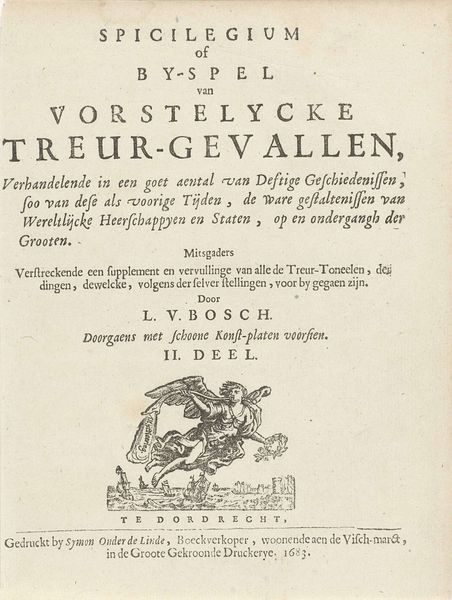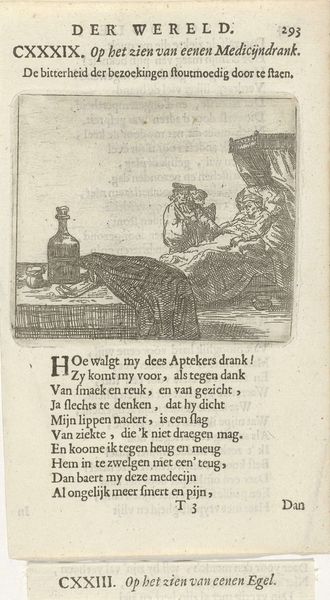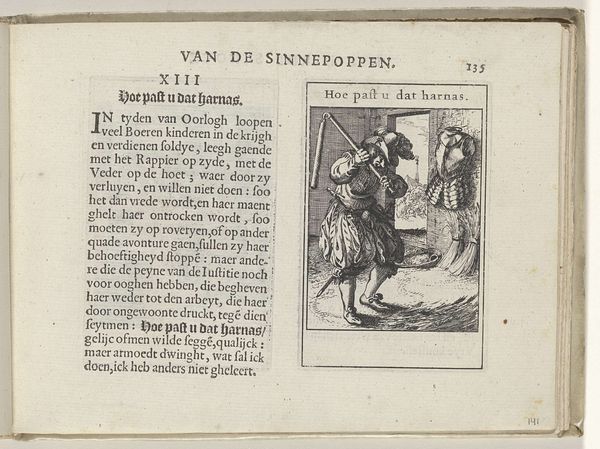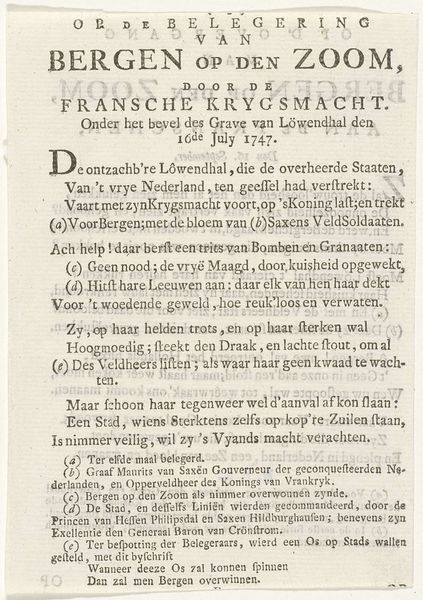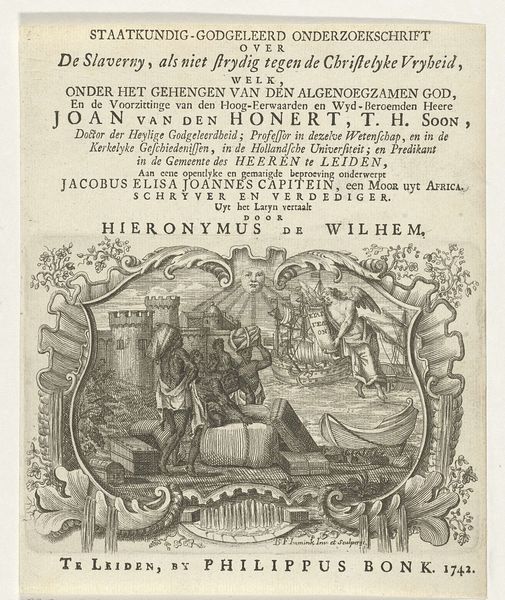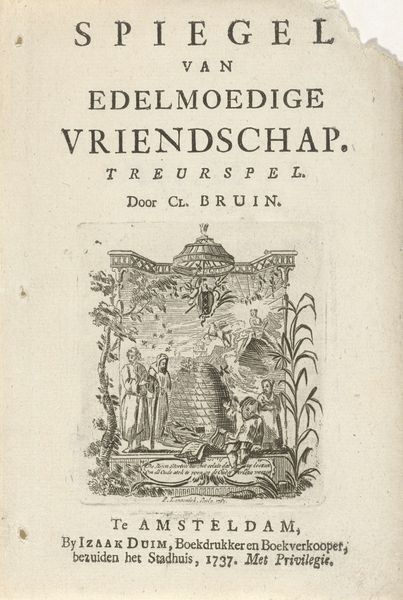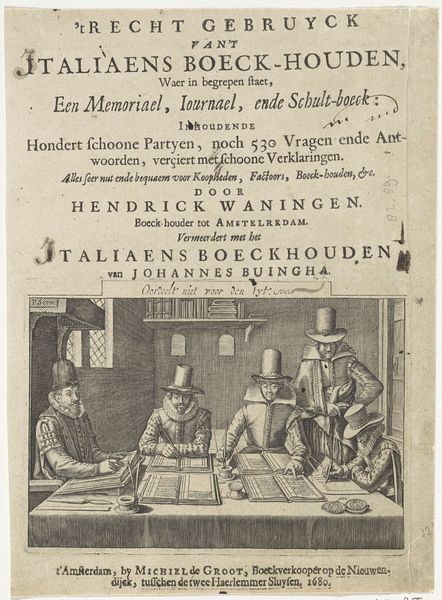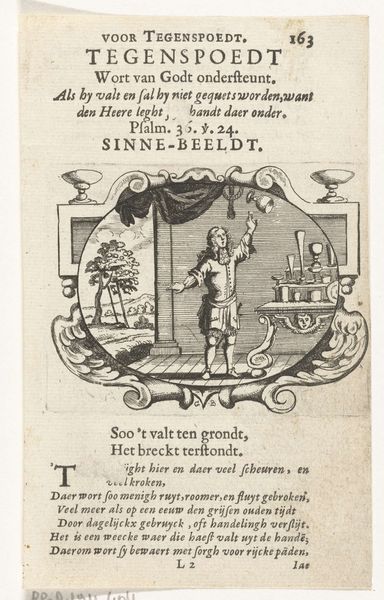
print, engraving
#
baroque
# print
#
figuration
#
genre-painting
#
engraving
Dimensions: height 130 mm, width 171 mm, height 327 mm, width 211 mm
Copyright: Rijks Museum: Open Domain
Curator: Let's delve into this print titled "Triktrak spelende mannen," potentially dating from 1623 to 1709, currently housed in the Rijksmuseum. Editor: It looks like an engraving, maybe a scene from everyday life? There are men playing a game, perhaps a backgammon variant ("Triktrak"), but I'm also struck by the figures in the background in the mirror or frame. What do you see in this piece, considered purely on its visual merits? Curator: Precisely. Stripping away contextual narratives, observe how the artist orchestrates a visual hierarchy through the considered deployment of line. The foreground, with its animated figures engrossed in their game, presents a dense, intricate network of etched lines, fostering a palpable sense of tension and immediacy. Note the diagonals, which seem to underscore the precarious nature of play and political maneuverings. Editor: It’s almost as if the whole composition is like one big, complex machine—a network. The people mirror each other and have this complex game going on in the front. Curator: An astute observation. Now consider the background; those almost ethereal figures seem distant in time and space, framed by that aperture—are they truly separate, or intrinsically linked through composition? This arrangement begs consideration: what are we seeing here? How does the framing device work with the linear techniques on display, using a sort of meta composition to frame the inner work of linear engraving and suggestion of reality? Editor: It makes me think of mise en abyme. A world within a world. I see it now: this contrast throws the central game into sharp relief, almost making them stage actors and their own game and negotiations like political performances. Curator: Indeed. So, focusing primarily on form and composition allows one to start peeling back the layers. Perhaps that approach, at the exclusion of direct historical investigation, helps you connect it back to contemporary concerns regarding staging of value and its ultimate illusion? Editor: Definitely. It gives me a new appreciation for the intentionality of the artist, and for the rich semiotic potential embedded within the print's formal elements, transcending temporal constraints and immediate realities.
Comments
No comments
Be the first to comment and join the conversation on the ultimate creative platform.
